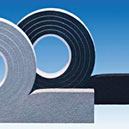Common Causes of Loose Contact in Sealants and Adhesives
- 24 January 2017
- Posted by: Madhuraka
- Category: Article
 Sealants exhibit great strength when bond integrity is assured. The stalwart adhesive family is similarly endowed, so both chemical bonding agents should work ten out of ten times, right? Not quite, for there are instances where the curing joint slackens or just forms a relaxed fit. We need to pin down the common causes of loose contact in sealants and adhesives so that we can eliminate these second-rate bonds. We’ll start with join site ambiguities.
Sealants exhibit great strength when bond integrity is assured. The stalwart adhesive family is similarly endowed, so both chemical bonding agents should work ten out of ten times, right? Not quite, for there are instances where the curing joint slackens or just forms a relaxed fit. We need to pin down the common causes of loose contact in sealants and adhesives so that we can eliminate these second-rate bonds. We’ll start with join site ambiguities.
Loose Surfaces Sink Adhesion Strength
The two mating surfaces can’t afford any kind of surface erosion, not when the curing sealant requires anchoring strength from the material edges. Likewise, oily buildups and greasy deposits will compromise the strength of the join, which is why surface preparation work must always be conducted before the adhesive or sealant is applied.
Oppressive Forces
If the tacky substance isn’t rated for high temperatures, it’s likely the thermally inadequate stuff will separate. Cohesion will decline as the heat-weakened compound loosens. Strong vibrations also carry enough impact to defeat this rated cohesion factor, but an intelligently infused elasticity feature will offset this latter threat.
Sealant Aging
The service life of a top-notch sealing agent earns itself a question mark when loosened contacts develop along the cured joint. A spider-webbing series of tiny cracks indicates product brittleness, an aging effect that undermines the robust fixative. The selection of a long-life product counteracts the problem, but there are still other cohesion-abrasive factors in motion. Weathering influences accelerate the aging effect. Thermal influences also play a role here, with expansion and contraction episodes undermining the bond.
Application Errors
Patience is a virtue, as is diligence and an ability to troubleshoot the common causes of loose sealant contact. But let’s rewind slightly and focus on the basic virtues. Expert application skills are not mandated here, but a certain amount of product familiarity is advised. Imagine the results of a poorly mixed multi-component sealant, for example. Cure agents and cohesion accelerants must be mixed as directed by the manufacturer.
Even joint movement during sealant or adhesive application will impact the stability of the joint, with the two non-contact elements creating shearing stress. Arguably, a seasoned installer should take on the task, especially if we’re talking about an industrial bonding project. Finally, the correct product needs to be selected for the job. Again, the qualified installer will be aware of this final caveat, the fact that some adhesives perform best when they’re used on specific material surfaces.

